#gérard marias
Text

Portrait of the Princesse Maria Vasilievna Kochubei, 1809
By François Gérard, French
#François Gérard#Gérard#Princesse Maria Vasilievna Kochubei#napoleonic era#empire style#empire#19th century art#french empire#first french empire#french art#pretty#historical fashion#portrait#1809#russian art#regency
14 notes
·
View notes
Photo



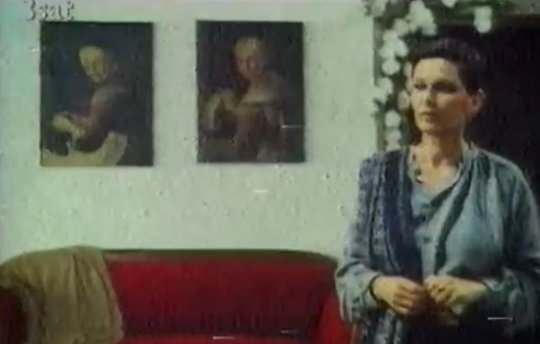



#violanta#daniel schmid#1976#fanny and alexander#ingmar bergman#werner herzog#my son my son what have ye done#herz aus glas#bernardo bertolucci#last tango in paris#faust#alexander sukorov#weimar#goethe#lucia bosè#maria schneider#gerard depardieu#ingrid carven#gérard depardieu#schatten der engel#la paloma#ostwind
2 notes
·
View notes
Text

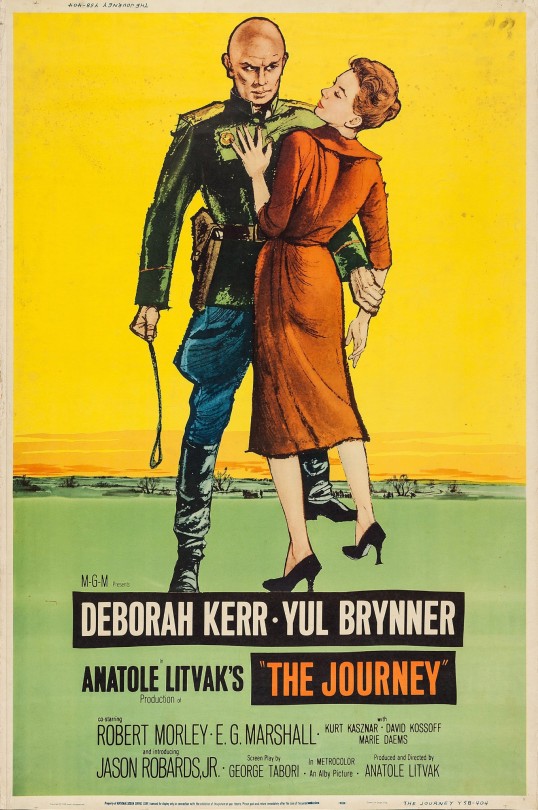
W A T C H I N G
#THE JOURNEY (1959)#YUL BRYNNER#DEBORAH KERR#JASON ROBARDS#Anatole Litvak#George Tabori#Robert Morley#E. G. Marshall#Anne Jackson#Ron Howard#Flip Mark#Kurt Kasznar#David Kossoff#Gérard Oury#Marie Daëms#Anouk Aimée#Maria Urban#Siegfried Schürenberg#Charles Regnier#Iván Petrovich#Senta Berger#1956 Hungarian revolution#Magyar#Hungary#WATCHING#🇭🇺
2 notes
·
View notes
Text
Opera on YouTube, Part 2
Le Nozze di Figaro (The Marriage of Figaro)
Glyndebourne Festival Opera, 1973 (Knut Skram, Ileana Cotrubas, Kiri Te Kanawa, Benjamin Luxon; conducted by John Pritchard; English subtitles)
Jean-Pierre Ponnelle studio film, 1976 (Hermann Prey, Mirella Freni, Kiri Te Kanawa, Dietrich Fischer-Dieskau; conducted by Karl Böhm; English subtitles) – Acts I and II, Acts III and IV
Tokyo National Theatre, 1980 (Hermann Prey, Lucia Popp, Gundula Janowitz, Bernd Weikl; conducted by Karl Böhm; Japanese subtitles)
Théâtre du Châtelet, 1993 (Bryn Terfel, Alison Hagley, Hillevi Martinpelto, Rodney Gilfry; conducted by John Eliot Gardiner; Italian subtitles)
Glyndebourne Festival Opera, 1994 (Gerald Finley, Alison Hagley, Renée Fleming, Andreas Schmidt; conducted by Bernard Haitink; English subtitles)
Zürich Opera House, 1996 (Carlos Chaussón, Isabel Rey, Eva Mei, Rodney Gilfry; conducted by Nikolaus Harnoncourt; English subtitles)
Berlin State Opera, 2005 (Lauri Vasar, Anna Prohaska, Dorothea Röschmann, Ildebrando d'Arcangelo; conducted by Gustavo Dudamel; French subtitles)
Salzburg Festival, 2006 (Ildebrando d'Arcangelo, Anna Netrebko, Dorothea Röschmann, Bo Skovhus; conducted by Nikolas Harnoncourt; English subtitles) – Acts I and II, Acts III and IV
Teatro all Scala, 2006 (Ildebrando d'Arcangelo, Diana Damrau, Marcella Orasatti Talamanca, Pietro Spagnoli; conducted by Gérard Korsten; English and Italian subtitles)
Salzburg Festival, 2015 (Adam Plachetka, Martina Janková, Anett Fritsch, Luca Pisaroni; conducted by Dan Ettinger; no subtitles)
Tosca
Carmine Gallone studio film, 1956 (Franca Duval dubbed by Maria Caniglia, Franco Corelli, Afro Poli dubbed by Giangiacomo Guelfi; conducted by Oliviero de Fabritiis; no subtitles)
Gianfranco de Bosio film, 1976 (Raina Kabaivanska, Plácido Domingo, Sherrill Milnes; conducted by Bruno Bartoletti; English subtitles)
Metropolitan Opera, 1978 (Shirley Verrett, Luciano Pavarotti, Cornell MacNeil; conducted by James Conlon; no subtitles)
Arena di Verona, 1984 (Eva Marton, Jaume Aragall, Ingvar Wixell; conducted by Daniel Oren; no subtitles)
Teatro Real de Madrid, 2004 (Daniela Dessí, Fabio Armiliato, Ruggero Raimondi; conducted by Maurizio Benini; English subtitles)
Royal Opera House, Covent Garden, 2011 (Angela Gheorghiu, Jonas Kaufmann, Bryn Terfel; conducted by Antonio Pappano; English subtitles)
Finnish National Opera, 2018 (Ausrinė Stundytė, Andrea Carè, Tuomas Pursio; conducted by Patrick Fournillier; English subtitles)
Teatro alla Scala 2019 (Anna Netrebko, Francesco Meli, Luca Salsi; conducted by Riccardo Chailly; Hungarian subtitles)
Vienna State Opera, 2019 (Sondra Radvanovsky, Piotr Beczala, Thomas Hampson; conducted by Marco Armiliato; English subtitles)
Ópera de las Palmas, 2024 (Erika Grimaldi, Piotr Beczala, George Gagnidze; conducted by Ramón Tebar; no subtitles)
Don Giovanni
Salzburg Festival, 1954 (Cesare Siepi, Otto Edelmann, Elisabeth Grümmer, Lisa della Casa; conducted by Wilhelm Furtwängler; English subtitles)
Giacomo Vaccari studio film, 1960 (Mario Petri, Sesto Bruscantini, Teresa Stich-Randall, Leyla Gencer; conducted by Francesco Molinari-Pradelli; no subtitles)
Salzburg Festival, 1987 (Samuel Ramey, Ferruccio Furlanetto, Anna Tomowa-Sintow, Julia Varady; conducted by Herbert von Karajan; no subtitles)
Teatro alla Scala, 1987 (Thomas Allen, Claudio Desderi, Edita Gruberova, Ann Murray; conducted by Riccardo Muti; English subtitles)
Peter Sellars studio film, 1990 (Eugene Perry, Herbert Perry, Dominique Labelle, Lorraine Hunt Lieberson; conducted by Craig Smith; English subtitles)
Teatro Comunale di Ferrara, 1997 (Simon Keenlyside, Bryn Terfel, Carmela Remigio, Anna Caterina Antonacci; conducted by Claudio Abbado; no subtitles) – Act I, Act II
Zürich Opera, 2000 (Rodney Gilfry, László Polgár, Isabel Rey, Cecilia Bartoli; conducted by Nikolaus Harnoncourt; English subtitles)
Festival Aix-en-Provence, 2002 (Peter Mattei, Gilles Cachemaille, Alexandra Deshorties, Mirielle Delunsch; conducted by Daniel Harding; no subtitles)
Teatro Real de Madrid, 2006 (Carlos Álvarez, Lorenzo Regazzo, Maria Bayo, Sonia Ganassi; conducted by Victor Pablo Pérez; English subtitles)
Festival Aix-en-Provence, 2017 (Philippe Sly, Nahuel de Pierro, Eleonora Burratto, Isabel Leonard; conducted by Jérémie Rohrer; English subtitles)
Madama Butterfly
Mario Lanfranchi studio film, 1956 (Anna Moffo, Renato Cioni; conducted by Oliviero de Fabritiis; no subtitles)
Jean-Pierre Ponnelle studio film, 1974 (Mirella Freni, Plácido Domingo; conducted by Herbert von Karajan; English subtitles)
New York City Opera, 1982 (Judith Haddon, Jerry Hadley; conducted by Christopher Keene; English subtitles)
Frédéric Mitterand film, 1995 (Ying Huang, Richard Troxell; conducted by James Conlon; English subtitles)
Arena di Verona, 2004 (Fiorenza Cedolins, Marcello Giordani; conducted by Daniel Oren; Spanish subtitles)
Sferisterio Opera Festival, 2009 (Raffaela Angeletti, Massimiliano Pisapia; conducted by Daniele Callegari; no subtitles)
Vienna State Opera, 2017 (Maria José Siri, Murat Karahan; conducted by Jonathan Darlington; no subtitles)
Wichita Grand Opera, 2017 (Yunnie Park, Kirk Dougherty; conducted by Martin Mazik; English subtitles)
Teatro San Carlo, 2019 (Evgenia Muraveva, Saimir Pirgu; conducted by Gabriele Ferro; no subtitles)
Rennes Opera House, 2022 (Karah Son, Angelo Villari; conducted by Rudolf Piehlmayer; French subtitles)
#opera#complete performances#youtube#le nozze di figaro#the marriage of figaro#tosca#don giovanni#madama butterfly#madame butterfly#wolfgang amadeus mozart#giacomo puccini
31 notes
·
View notes
Text
The Calendar of Monte Cristo: Chapter 17
c.1789: Birth of Gérard de Villefort. [R]
1801: Louis I becomes King of Etruria. [H]
1803: Death of Louis I. His widow Maria Luisa rules as regent for three-year-old Louis II. [H]
Abbé Faria meets Noirtier at the court of the Queen of Etruria.
1807: Kingdom of Etruria annexed into the French Empire by Napoleon. [H]
1807: Abbé Faria suffers his first seizure. [E]
?: Edmond goes on a voyage to India. (The only indicator is “while still almost a child”, which doesn’t narrow it down much since he’s only 18 at the beginning of the story.)
26(?) February 1815: Danglars meets with Caderousse and Fernand. [R]
c.1821: Abbé Faria completes his manuscript on the monarchy in Italy. [R]
c.1821: Edmond meets Abbé Faria. [R] The day is a Sunday. [E]
c.1822: Edmond and Abbé Faria commence digging a new escape tunnel. [R]
c.1824: Escape tunnel completed. Abbé Faria suffers his second seizure. [R]
Another complication in the question of what day Edmond was arrested: Edmond tells Abbé Faria that the meeting between the conspirators happened two days before his wedding day, which doesn’t fit with any earlier date. In Chapter 5 it said the wedding day was the next day after the meeting, and if we go with the explicitly stated dates (24 and 28 February) the gap should be larger.
On a happier note, one of the fun things about doing a project like this is that you learn interesting things because you start paying attention to details that would normally just go past you. It had never occurred to me before to be curious about who the Queen of Etruria was, or why she was the former Queen of Etruria.
5 notes
·
View notes
Photo

François Gérard: Retrato do Conde Moritz Christian von Fries coa muller, Maria Theresia Josepha, nacida princesa Hohenlohe-Waldenburg-Schillingsfürst, e o fillo, Moritz (ca.1805)
14 notes
·
View notes
Text

Maria Manton (1910-2003) La Maison d'Alger 1977 Oil on panel signed at the bottom left center, countersigned, titled, dated and bearing the stamp of the workshop on the back.
From 1948 Maria Manton exhibited in groups at the Colette Allendy gallery and then at that of Lydia Conti where her works rub shoulders with those of Hans Hartung, Gérard Schneider, Some of Maria Manton's works were exhibited at the Soulages Museum during the exhibition "Women 50s.
Interencheres
12 notes
·
View notes
Text

Queen Desideria of Sweden and Norway, before she was named Crown Princess, by François Gérard (oil on canvas, 1808)
Désirée was born on 8 November 1777 in Marseilles, the youngest of nine children. Following the French Revolution, she got to know Jean-Baptiste Bernadotte – who later became King Karl XIV Johan.
They were married in 1798, and their son Oskar was born the following year. She and Oskar arrived in Sweden in 1810, and in 1811 she was presented at the Royal Court.
Desideria was a good friend of Napoleon Bonaparte, and longed to return to Paris throughout her time in Sweden. She only stayed in Sweden temporarily, and in summer 1811 she returned to France.
When her husband ascended to the throne in 1818, she became Queen of Sweden and Norway, but remained in Paris. It was not until her son's wedding in 1823 that she returned to Sweden.
In Norway, Desideria was known as a patron for poor girls in Kristiania, now the city of Oslo. She supported Maria Schandorff's Eugenia Foundation, which was founded in 1828 and for which she provided regular financial support.
Photo: royalpalaces.se
#swedish royal family#queen desideria#désirée clary#house of bernadotte#art history#official portrait#swedish royalty#swedish history#royal history
2 notes
·
View notes
Photo
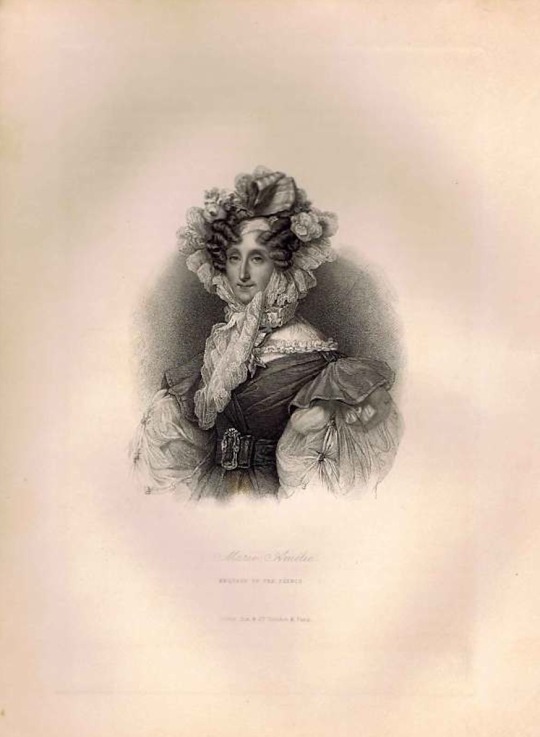
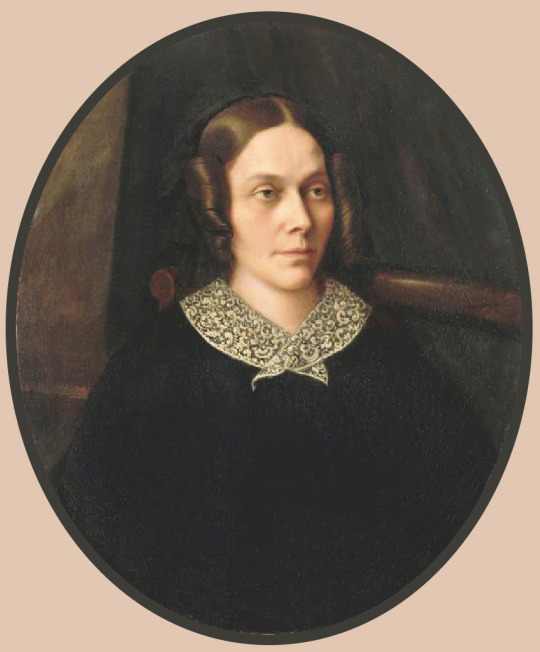


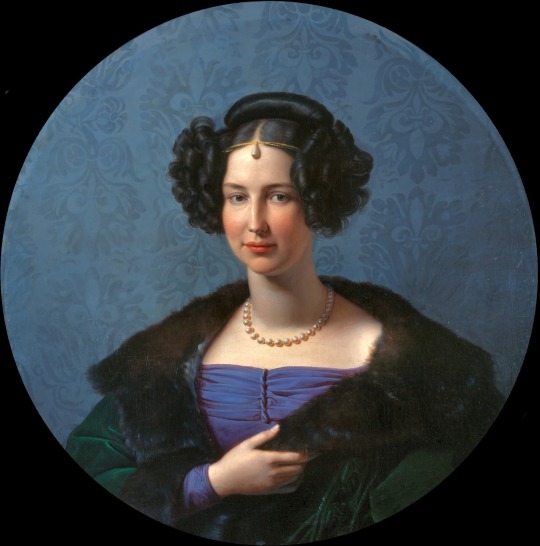
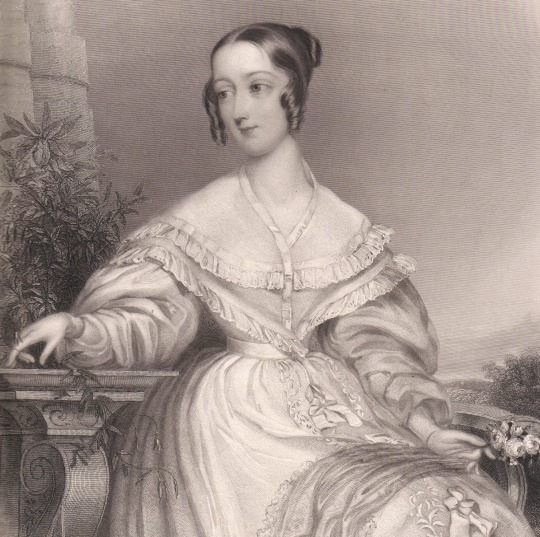




Some time around 1840 -
Top row ca. 1840 Marie-Amélie black and white print. From eBay 873X1191. This looks more ca. 1830.
Second row left ca. 1840 Sophie Rostopchine, Comtesse de Ségur by ? (Versailles) Photo - Gérard Blot. Probably from Réunion des musées nationaux; fixed spots w Pshop 859X1037.
Second row right ca. 1840 Sophie Rostopchine by Louis Gaston de Ségur (probably at the Musée de la comtesse de Ségur - Aube (Orne), Normandie, France). From enmargedutemps.wordpress.com/2014/03/17/comtesse-de-segur/; removed spots and flaws with Photoshop 643X83.
Third row ca. 1840 Jane Stirling with young Fanny Elgin (later Lady Bruce) by Achille Devéria. From Wikimedia 1115X1500.
Fourth row left ca. 1840 Wilhelmine Luise Prinzessin von Preussen, née Anhalt-Bernburg by Friedrich Wilhelm Schadow (Georgium - Dessau-Roßlau, Sachsen-Anhalt, Germany). From tuttartpitturasculturapoesiamusica.com/2017/11/Wilhelm-von-Schadow.html 1582X1600 @72 365k.
Fourth row right ca. 1840 Lady Flora Hastings possibly by Edward Finden after E. Hawkins; portrait from the book Hastings of Hastings. From Wikimedia, attributions from British Museum Web site 2275X2263.
Fifth row ca. 1840 Unknown Countess by Moritz Michael Daffinger (location ?). From fotki.yandex.ru/users/stepanov-el/view/543420/?page=3; fixed spots w Pshop 831X1085 @72 333kj.
Sixth row left ca. 1840-1841 Ellen (‘Nelly’) Power by Edwin Landseer (Wallace Collection - London UK) From the museum's Web site 566X769.
Sixth row right ca. 1840 Therese Countess Sternberg, née Stadion by Alois von Anreiter (Bomann Museum, Tansey Collection of Miniatures - Celle, Niedersachsen Germany). Probably from their Web site 640X807.
Seventh row ca. 1840 Rainha Maria II of Portugal by John Simpson (Museu Imperial - Petropolis, Rio de Janeiro, Brazil). From Wikimedia; removed spots in background with Photoshop 1047X1337.
#1840s fashion#Romantic era fashion#Biedermeier fashion#early Victorian fashion#Louis-Philippe fashion#Marie-Amélie#Sophie Rostopchine#Gérard Blot#Louis Gaston de Ségur#side curl coiffure#bun#straight hair#lace collar#Jane Stirling#Achille Devéria#V neckline#lace bertha#Wilhelmine Luise Hohenzollern#Friedrich Wilhelm Schadow#pleated bodice#ferroniere#fur-trimmed coat#Flora Hastings#Edward Finden#E. Hawkins#scoop neckline#Moritz Michael Daffinger#off shoulder V neckline#Ellen (‘Nelly’) Power#Edwin Landseer
15 notes
·
View notes
Photo
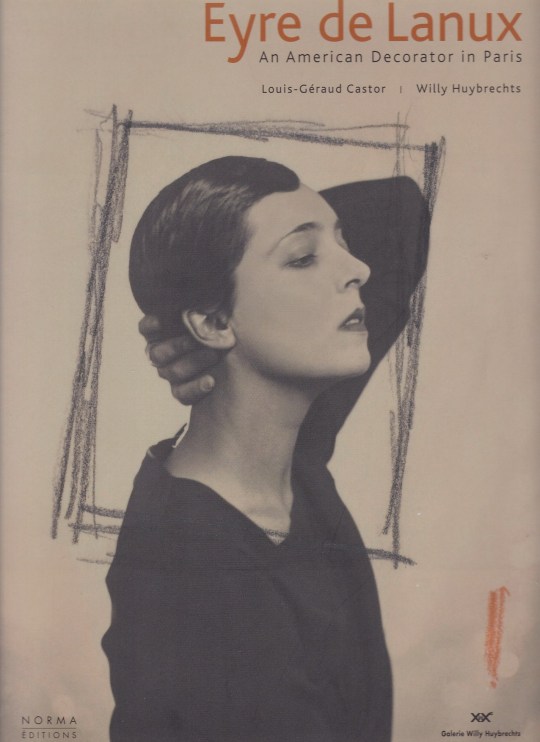



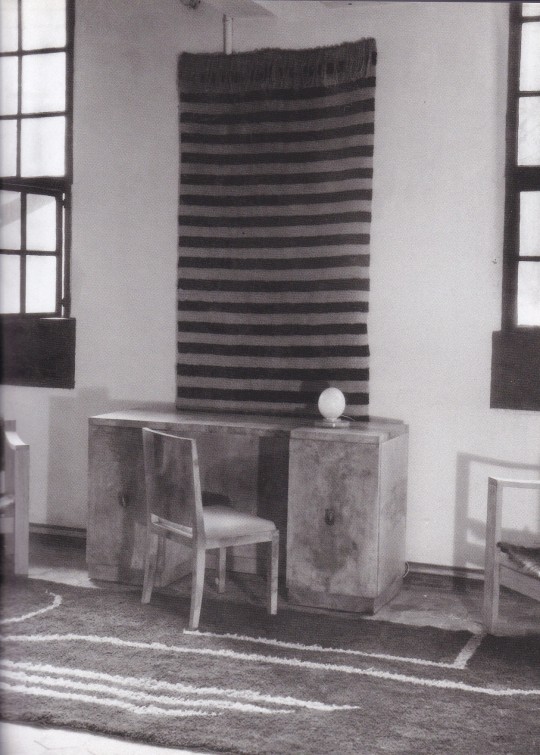





Eyre de Lanux
An American Decorator in Paris
Louis-Gérard Castor, Willy Huybrechts
Norma Editions, Paris 2015, 207 pages, 23.72 x 31.37 cm, ISBN 978-2915542646
euro 60,00
email if you want to buy :[email protected]
Born into the American aristocracy, Elizabeth Eyre de Lanux abandoned high society to pursue an artistic career. Starting her training with Constantin Brancusi, she then arrived in Paris in 1919, following her marriage to French diplomat and writer Pierre de Lanux. She soon met the designer Eileen Gray. Eyre took over Gray's research on laquer and continued experimenting with innovative materials not previously used in furniture, namely cork, amber and linoleum. With Evelyn Wyld, she created a literary universe in which the poetry of her rugs, blended with furniture and lamps in totally new ways, all in an environment of muted shades and modern comfort. An ambitious artist in the Surrealist Paris of the interwar years, she wanted to believe in a peaceful future. But the crash of 1929 and World War II sounded the death knell for the career of this fresh new talent, ensuring that her creations became the rarest of objects. A bridge between the pioneering Eileen Gray and the rational Charlotte Perriand, like them, Eyre de Lanux drew inspiration from Japonism. Neither poor, nor stripped bare, her rare architectured interiors have remained secret until now. Elizabeth Eyre de Lanux is a recognised name but a forgotten talent. With Eileen Gray, Eyre de Lanux, Charlotte Perriand and Maria Pergay, the four cardinal points have now been identified.
27/12/22
orders to: [email protected]
ordini a: [email protected]
twitter: @fashionbooksmi
instagram: fashionbooksmilano, designbooksmilano tumblr: fashionbooksmilano, designbooksmilano
#Eyre de Lanux#Eileen Gray#rugs#furniture#lamps#Surrealist Paris#Cjarlotte Perriand#Japonism#Maria Pergay#American Decorator#design books#designbooksmilano#fashionbooksmilano
13 notes
·
View notes
Text


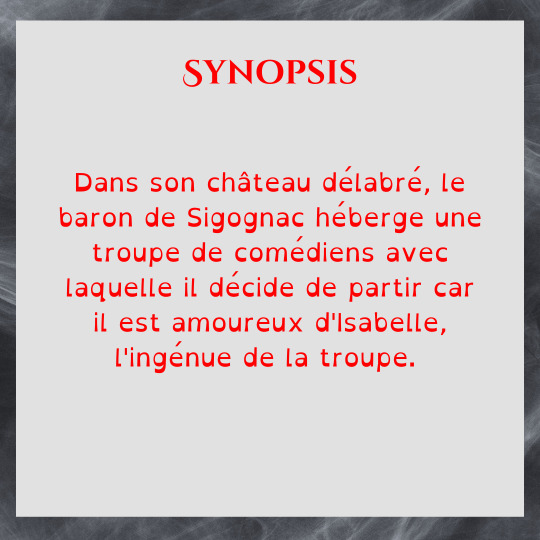


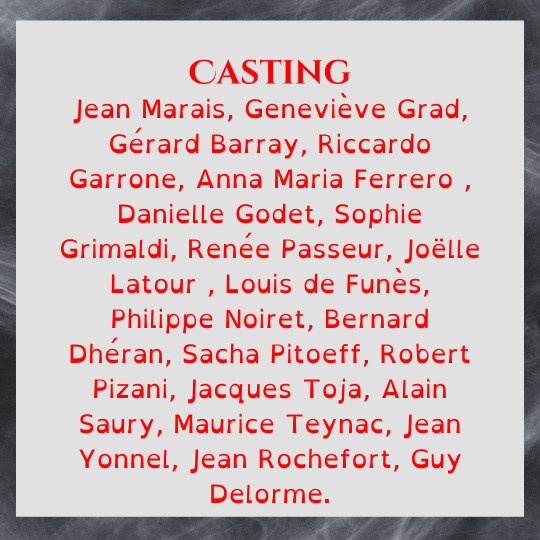
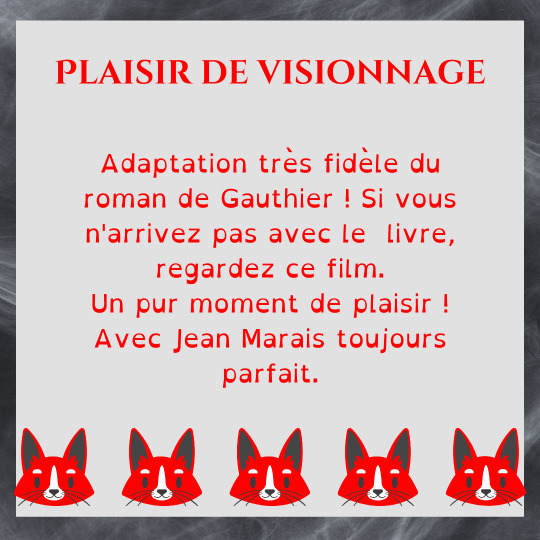


Le Capitaine Fracasse.
1961.
Réalisation : Pierre Gaspard-Huit.
Scénariste : Pierre Gaspard-Huit et Albert Vidalie.
Casting : Jean Marais, Geneviève Grad, Gérard Barray, Riccardo Garrone, Anna Maria Ferrero , Danielle Godet, Sophie Grimaldi, Renée Passeur, Joëlle Latour , Louis de Funès, Philippe Noiret, Bernard Dhéran, Sacha Pitoeff, Robert Pizani, Jacques Toja, Alain Saury, Maurice Teynac, Jean Yonnel, Jean Rochefort, Guy Delorme.
Synopsis :
Dans son château délabré, le baron de Sigognac héberge une troupe de comédiens avec laquelle il décide de partir car il est amoureux d'Isabelle, l'ingénue de la troupe. Bretteur à la fine épée et saltimbanque par amour, il se fait appeler sur scène le « Capitaine Fracasse ». Mais le duc de Vallombreuse, devenu le rival amoureux de Sigognac, est prêt à tout pour se débarrasser de lui et ravir Isabelle.
Plaisir de Visionnage :
Adaptation très fidèle du roman de Gauthier ! Si vous n'arrivez pas avec le livre, regardez ce film.
Un pur moment de plaisir ! Avec Jean Marais toujours parfait.
Note : 5 chats.
Disponibilité :
Existe en DVD.
Bonus Point Chat :
Le Baron a un chat, comme dans le livre !
Plus un chien et un cheval.
Note : 3 chats.
3 notes
·
View notes
Text
Contacts
Une Alexandra, deux Alexandre, une Alexia, une Alice, une Aline, un André, une Angélique, deux Anna dont une Anna-Maria, neuf Anne, dont une Anne-Charlotte et deux Anne-Gaëlle. Une Anouk. Un Anthony, un Antoine, deux Arnaud, deux Aurélie, deux Aurélien. Une banque, une banquière. Un Baptiste, trois Barbara, un Barry, une Béa, un Benjamin, une Bérengère, un Bernard, une Bertha. Trois Camille, deux Carine, trois Catherine, une Cathy, deux Cécile, une Cécilia, une Céline, plusieurs Centres, deux Chantal, deux Christelle, un Christian, deux Christine, un Christophe, deux Claire, une Corinne. Un Damien, un Daniel, une Danielle, deux David, une Delphine, trois Denis, un dentiste, un Didier, un Djib et une Doria. Une Edwige, un Élian, une Éliane, une Élise, un Elliot, une Émeline, trois Émilie, une Emma, un Emmanuel, une Emmanuelle, cinq Éric. Un Fabien, une Fabienne, un Fabrice, une Flavie, une Florence, trois Florent, deux Florian, deux Floriane, deux Franck, deux François dont un F.-C., une Françoise, trois Frédéric, une Frédérique. Une Gaëlle, une Garance, un Gérard, une Ghislaine, un Grégory, deux Guillaume, un Gwenaël. Une Hélène, un hippocampe. Trois infirmières, deux Isabelle. Un Jack, un Jamal. Un Jean-François, un Jean-Marc, un Jean-Philippe, cinq Jérôme, un João, un Johann, un Jordane, une Judith, une Julie, huit Julien. Une Katy, un Kervin, deux kinés. Deux Lætitia, deux Laurence, trois Laurent, une Leslie, un Lewis, trois librairies, un Louis, une Louna, un Luc. Une Manon, un Marc, une Mariane, quatre Marie, une Marina, deux Marine, une Marion, un Martin, deux Martine, un Matthieu, une Mathilde, deux Maud dont une Maud-Elisa, deux Michèle, deux Mickaël, un Mirko, une Morgane, une Murielle, une Myriam. Une Nadine, une Nani, une Natacha, neuf Nathalie, une Néda, deux Nelly, un Nico et un Nicolas, un notaire. Une Odile, trois Olivier, un orthodontiste, une Oskia. Une Pamela, deux Pascal, deux Patrick, une Pauline, une Perrine, cinq Philippe, un Pierre, un Pierrick, un plombier. Une Quitterie. Un Raoul, un Raphaël, un Rémi, deux Renaud, une Rieko, deux Robert, un Roland, deux Rose dont une Rose-Marie. Une Sabine, une Sabrina, une Sandrine, une Sandy, quatre Sarah, un Séb et un Sébastien, un Serge, trois Séverine, un Simon, une Solenne, cinq Sophie, deux Stéphane, un Swan, une Sylvie. Un Théo, un Thibaud, deux Thierry, un Tony. Trois Valérie, un Victor, une Viki, quatre Vincent, trois Virginie. Un Wilfried. Un Xavier. un Yannick, un Yarol.
9 notes
·
View notes
Text
Third POTO Korea Production Cast(and informations)
- 4. Andre, Firmin, Carlotta(2), Meg, Madame Giry, Piangi, ensemble, ballet dancers and swings.

Monsieur Andre: 윤영석[Yoon Young-seok]
Mr. Yoon was the first Korean Phantom. He was the only principal Phantom at the 1st POTO Korea production(김장섭[Kim/Gim Jang-sub]was an alternate Phantom).
He did Phantom again in the 2nd POTO Korea production.(With another Phantom, 양준모[Yang Joon-mo]. + Later 홍광호[Hong Kwang-ho], who had played Raoul, became Phantom too.)
He also did 'Gérard Carrière(Phantom's father and the previous head of the Paris Opera)' at Kopit & Yeston's musical 'Phantom'.(3rd and 4th Korea productions.)
(He did 'Brava, brava, bravissima' improv at here.)
P.S. Mr. Yoon played 'Franz Joseph' in the musical 'Elisabeth'.

Monsieur Firmin: 이상준[Lee Sang-jun]
Mr. Lee played 'Joseph Buquet' in the 2nd POTO Korea production.
He also played 'Monsieur Cholet(the new head of the Paris Opera and Carlotta's husband)' at Kopit & Yeston's musical 'Phantom'(1st, 2nd and 3rd Korea productions).
He did ALW's musical 'Cats' too.


Carlotta Giudicelli: 이지영[Lee Ji-yeong], 한보라[Han Bo-ra]
Both Carlotta actresses are classic Opera singers. According to the NEWS, Ms. Lee performed Operas in USA. And Ms. Han performed Operas in Italy and Korea.
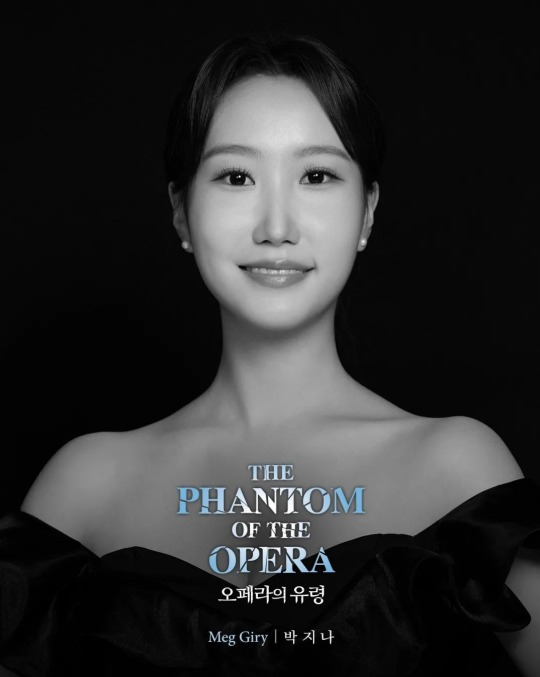


Meg Giry: 박지나[Park/Bak Jina/Gina]
Ms. Park(Bak) majored in both Ballet and Opera.
Madame Giry: 김아선[Kim/Gim A-seon]
Ms. Kim(Gim) was a Madame Giry understudy(and an ensemble member) in the 1st POTO Korea production.
She did many musical heroine roles(Emma, 선녀, Maria(The Sound of Music), Kim, Maria(West Side Story), 천명, 요석공주, Lotte...) in Korea. Especially, Ms. Kim was the first 'Kim' at the 1st 'Miss Saigon' Korea Production.
Ubaldo Piangi: 박회림[Park/Bak Hoe-rim]
Mr. Park(Bak) is a classic Opera singer who performed Operas in Italy(especially at Firenze(Florence)).
+
* Phantoms and informations:
* Christines and informations:
* Raouls :
* Both 김주택(Kim/Gim Ju-taek. Julian Kim), who plays Phantom, and 황건하(Hwang Gun-ha), who plays Raoul, participated in the Korean (Opera singer) audition program series, '팬텀 싱어(Phantom Singer)' series.


You can check ensemble, ballet dancers and swings at the link below.
#the phantom of the opera#poto korea#오페라의 유령 한국#오페라의 유령 라센#오페라의 유령#오페라의 유령 한국 라센#윤영석#이상준#이지영#한보라#박지나#김아선#박회림
9 notes
·
View notes
Text
intro post
Hi I'm Maria but you can call me Rosenberg. She/Her/Squeak 19 going on 20 and i love Les Mis my most FAVE ADAPTAION is Les Mis 2000 ( yes THAT ONE the one with Gérard Depardieu BUT LETS INGNORE THE CONTRVESTY ON HIM THIS BLOG ISNT FOR THAT ) but im also fond of BBC Les Mis (WEST!MADELEINE <3 ) 98 ( yes im a sucker for obscure adaptions ) and 78 (Perkinsvert my beloved) my fave characters are Madeleine ( i know hes jean valjean but still) and javert
my fave version of Madeleine is BBC!Madeleine and my fave version of Javert is Malkovert
this blog is Anti Madme Victornin
#inspector javert#javert#les mis 2000#bbc les mis#les mis 98#les mis 1978#shoujo cosette#dominic west#les amis
5 notes
·
View notes
Photo
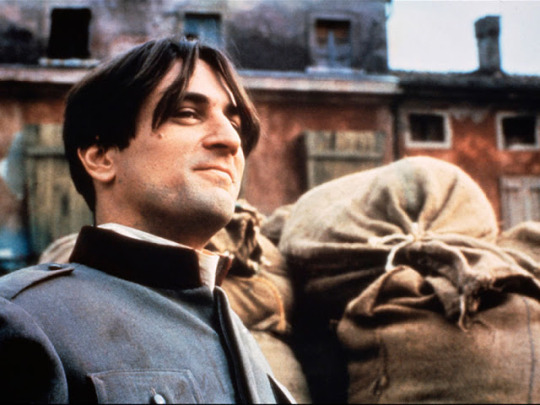

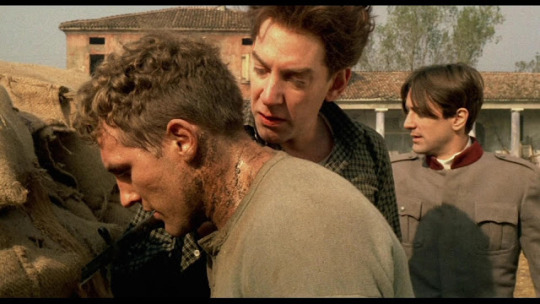
1900 (Bernardo Bertolucci, 1976)
Cast: Robert De Niro, Gérard Depardieu, Donald Sutherland, Dominique Sanda, Laura Betti, Burt Lancaster, Sterling Hayden, Stefania Sandrelli, Alida Valli, Romolo Valli, Paolo Pavesi, Roberto Maccanti. Screenplay: Franco Arcalli, Giuseppe Bertolucci, Bernardo Bertolucci. Cinematography: Vittorio Storaro. Production design: Maria Paola Maino, Gianni Quaranta. Film editing: Franco Arcalli. Music: Ennio Morricone.
In his attempt at an epic, Bernardo Bertolucci gives us many new and arresting things, but none perhaps more startling -- and ultimately more fatal to the film -- than Robert De Niro playing a passive weakling. The actor known for such aggressors as young Vito Corleone, for Travis Bickle, Jake LaMotta, even Rupert Pupkin seems crucially miscast as the padrone of an Italian estate who can't bring himself to take sides in the conflict between communists and fascists. The De Niro smirk is still there, but it doesn't seem to fit on the face of Alfredo Berlinghieri, who waffles even when his best friend, his boyhood companion Olmo Dalcò (Gérard Depardieu), is threatened by the fascist overseer Attila Mellanchini, played -- not to say overplayed -- by Donald Sutherland. Bertolucci crafts a relationship between Alfredo and Olmo that goes beyond bromance and somehow persists for a lifetime. They are nominally twins, born on the same day in 1901 as the legitimate son of the landowner and the bastard of a peasant on his estate. The film begins with the end of World War II and the routing of the fascists, then flashes back to their birth and boyhood, skips ahead to the end of World War I, the rise and fall of fascism, and concludes with a coda in which the elderly Alfredo and Olmo are still roughhousing. It's meant to be a capsule version of the 20th century -- the original Italian title, Novecento, means "nineteen hundreds." The film is never unwatchable, but its epic ambitions are undone, I think, by Bertolucci's instinct for melodrama at the expense of characterization. The villains, Attila and his companion Regina (Laura Betti), go so far over the top in their evil-doing -- Attila casually kills a small boy with the same coolness with which he slaughters a cat earlier in the film -- that they become almost comic. It's a striking turn in the wrong direction for the director who earlier gave us a subtly intricate look at the character of a fascist with Jean-Louis Trintignant's performance in The Conformist (1970). There are colorful cameos by Burt Lancaster and Sterling Hayden to be savored, and Vittorio Storaro's cinematography and Ennio Morricone's score help the film immeasurably, but the main impression left by 1900 is of a director who overreached himself.
16 notes
·
View notes
Photo
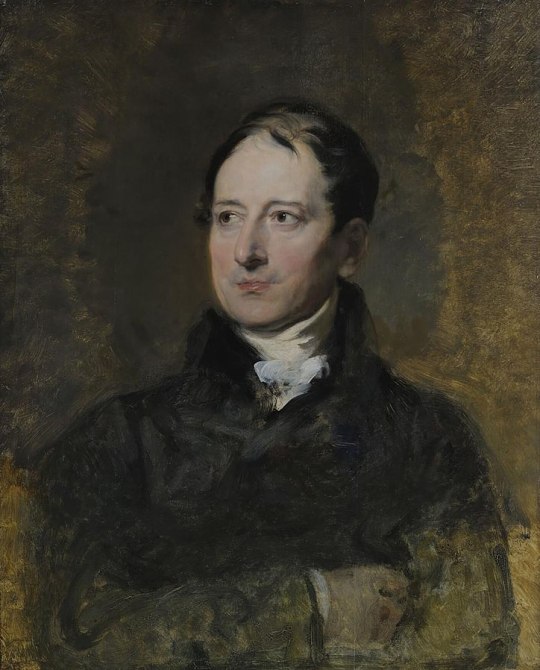
Thomas Lawrence - Portrait of François Pascal Simon, Baron Gérard (1770–1837) aged 54 - 1824
oil on canvas, height: 70 cm (27.5 in); width: 58 cm (22.8 in)
Palace of Versailles, Paris, France
Sir Thomas Lawrence PRA FRS (13 April 1769 – 7 January 1830) was a leading English portrait painter and the fourth president of the Royal Academy. Lawrence was a child prodigy. He was born in Bristol and began drawing in Devizes, where his father was an innkeeper at the Bear Hotel in the Market Square. At the age of ten, having moved to Bath, he was supporting his family with his pastel portraits. At eighteen he went to London and soon established his reputation as a portrait painter in oils, receiving his first royal commission, a portrait of Queen Charlotte, in 1790. He stayed at the top of his profession until his death, aged 60, in 1830.
Self-taught, he was a brilliant draughtsman and known for his gift of capturing a likeness, as well as his virtuoso handling of paint. He became an associate of the Royal Academy in 1791, a full member in 1794, and president in 1820. In 1810 he acquired the generous patronage of the Prince Regent, was sent abroad to paint portraits of allied leaders for the Waterloo chamber at Windsor Castle, and is particularly remembered as the Romantic portraitist of the Regency. Lawrence's love affairs were not happy (his tortuous relationships with Sally and Maria Siddons became the subject of several books) and, in spite of his success, he spent most of life deep in debt. He never married. At his death, Lawrence was the most fashionable portrait painter in Europe. His reputation waned during Victorian times, but has since been partially restored.
François Pascal Simon Gérard (4 May 1770 – 11 January 1837),[1] titled as Baron Gérard in 1809, was a prominent French painter. He was born in Rome, where his father occupied a post in the house of the French ambassador, and his mother was Italian. After he was made a baron of the Empire in 1809 by Emperor Napoleon, he was known formally as Baron Gérard.
François Gérard was born in Rome to J. S. Gérard and Cleria Matteï. At the age of twelve, Gérard obtained admission into the Pension du Roi in Paris. From the Pension, he passed to the studio of the sculptor Augustin Pajou, which he left at the end of two years for the studio of the history painter Nicolas-Guy Brenet, whom he quit almost immediately to place himself under Jacques-Louis David.
In 1789, he competed for the Prix de Rome, which was carried off by his comrade Girodet. In the following year (1790), he again presented himself, but the death of his father prevented the completion of his work and obliged him to accompany his mother to Rome. In 1791, he returned to Paris, but his poverty was so great that he was forced to forgo his studies in favor of employment which would bring in immediate profit. David at once availed himself of his help, and one of that master's most celebrated portraits, of Louis-Michel Le Pelletier de Saint-Fargeau, may owe much to the hand of Gérard. This painting was executed early in 1793, the year in which Gérard, at the request of David, was named a member of the revolutionary tribunal, from the fatal decisions of which he, however, invariably absented himself.
In 1794, he obtained the first prize in a competition, the subject of which was The Tenth of August, that is, the storming of the Tuileries Palace. Further stimulated by the successes of his rival and friend Girodet in the Salons of 1793 and 1794, Gérard (aided by Jean-Baptiste Isabey, the miniaturist) produced in 1795 his famous Bélisaire. In 1796, a portrait of his generous friend (conserved today in the Louvre) obtained undisputed success, and the money received from Isabey for these two works enabled Gérard to execute in 1797 his Psyche et l'Amour (illustration). At last, in 1799, his portrait of Madame Mère established his position as one of the foremost portrait-painters of the day.
In 1808, as many as eight (and in 1810, no less than fourteen) portraits by him were exhibited at the Salon, and these figures afford only an indication of the enormous numbers which he executed yearly. All of the leading figures of the Empire and of the Bourbon Restoration, and all of the most celebrated men and women of Europe, sat for Gérard. This extraordinary vogue was due partly to the charm of his manner and conversation, for his salon was as much frequented as his studio. Madame de Staël, George Canning, Talleyrand and the Duke of Wellington have all borne witness to the attraction of his society.
Rich and famous, Gérard was stung by remorse for earlier ambitions abandoned; at intervals, he had indeed striven with Girodet and other rivals to prove his strength at history painting, still a more prestigious genre than portraiture. His Bataille d'Austerlitz (1810) showed a breadth of invention and style which was even more conspicuous in L'Entrée d'Henri IV à Paris (at Versailles), the work with which in 1817 he paid homage to the returned Louis XVIII. After this date, Gérard declined, watching with impotent grief the progress of the Romantic school.
Loaded with honors – baron of the Empire in 1809, member of the Institut on 7 March 1812, officer of the Légion d'honneur, first painter to the king – he worked on, sad and discouraged. The revolution of 1830 added to his disquiet, and on 11 January 1837, after three days of fever, he died.
Gérard is best remembered for his portraits. The color of his paintings has suffered, but his drawings show in uninjured delicacy the purity of his line, and those of women are specially remarkable for a virginal simplicity and frankness of expression. His students included Heinrich Christoph Kolbe.
6 notes
·
View notes